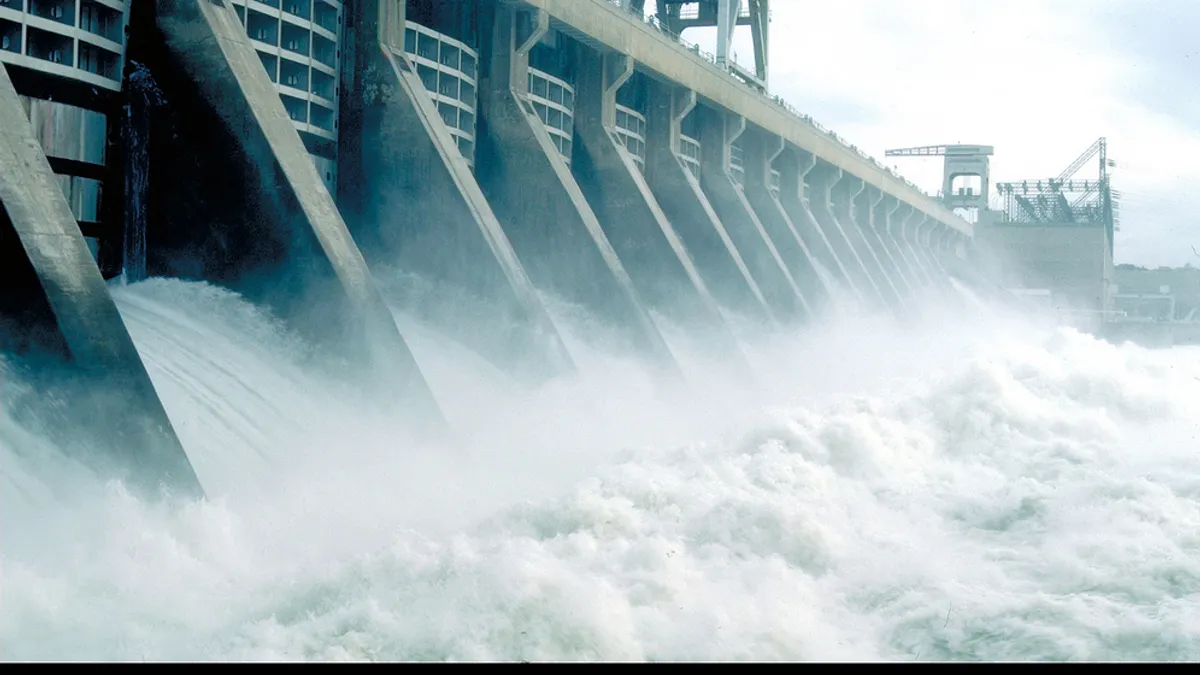Dive Brief:
- A new study from Washington State University-Vancouver (WSU) and the U.S. Environmental Protection Agency shows hydro reservoirs are responsible for 1.3% of manmade greenhouse gas emissions, about 25% higher than previously thought, Climate Central reports.
- Researchers examined 200 studies from reservoirs around the globe to develop new estimates of emissions. They believe all the world's manmade reservoirs are emitting as much as 1.1 gigatons of carbon dioxide each year.
- The emissions are fueled by decomposing organic matter that is submerged when manmade reservoirs are created. The study will be published in the journal Bioscience this week.
Dive Insight:
Scientists already knew reservoirs created greenhouse gas emissions, but new research shows that impacts are greater than previously thought. With renewable energy a growing focus around the world, emissions are likely to grow from the source — Climate Central points out there are almost 4,000 major hydropower dams being developed globally.
“To put these reservoir methane emissions in context, they are similar in size to other major human sources such as biomass burning and rice paddies, hence reservoirs are not necessarily the ‘clean’ energy source they are often thought to be,” authors of the study from WSU told Climate Central.
In the U.S., the Department of Energy report noted major hydropower potential provided future construction could meet environmental requirements. But the power sector has by and large chosen wind, solar and natural gas for capacity additions.
The issue extends beyond hydroelectricity—the paper looks at reservoirs created for drinking water, irrigation and other uses. Researchers examined 200 studies from reservoirs around the globe to develop new estimates of emissions. They believe all the world's manmade reservoirs are emitting as much as 1.1 gigatons of carbon dioxide each year.
Conservation group International Rivers notes there are efforts to capture the methane emissions from tropical reservoirs, and potentially use it in power generation projects.















